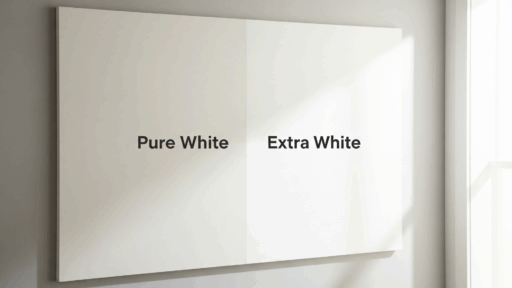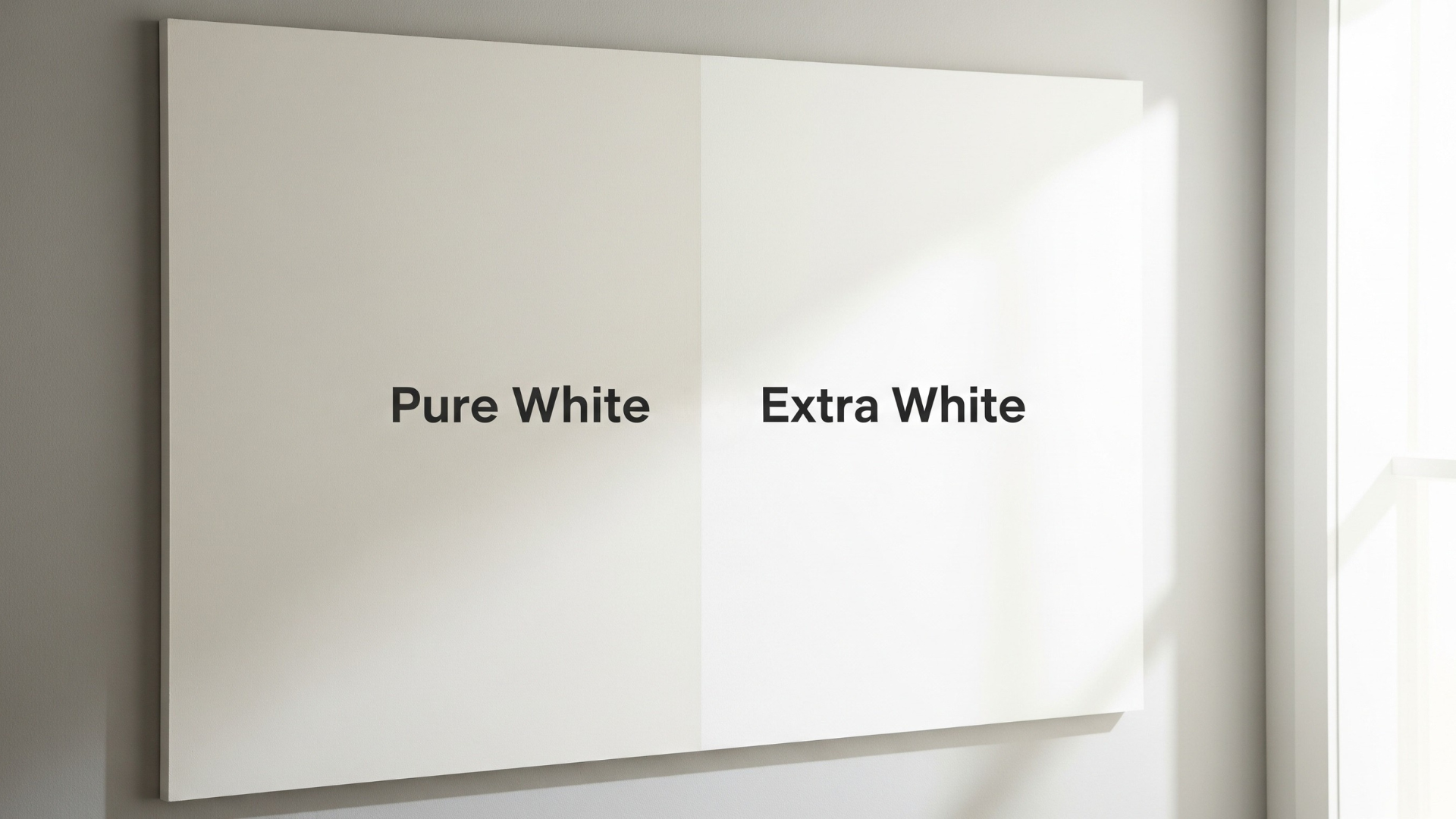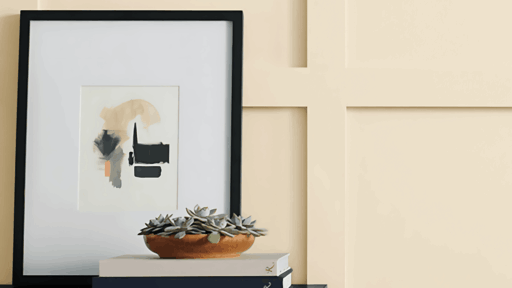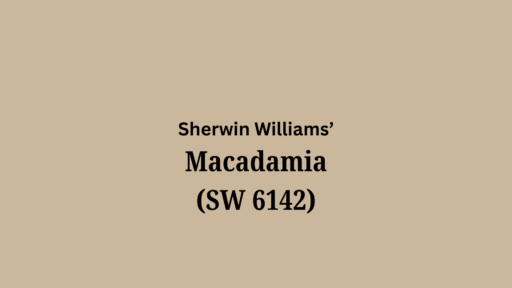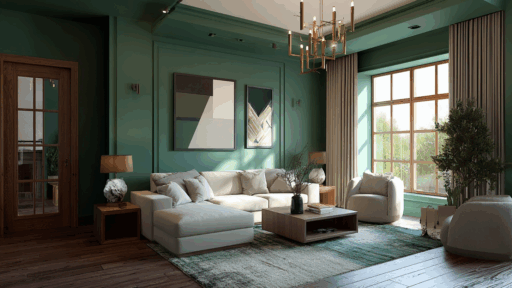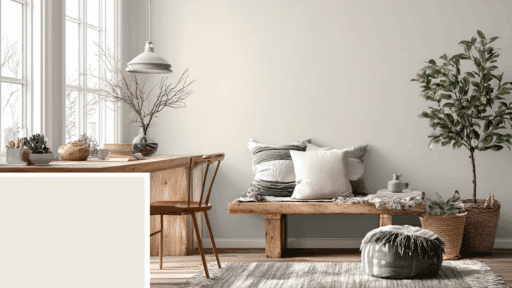Ever stood in the paint aisle, completely overwhelmed by dozens of white paint options that all look the same?
You’re not alone. Choosing the right white paint is one of the most challenging decisions in home decorating. Sherwin-Williams offers two popular white shades: Pure White and Extra White.
While both are versatile choices for your home, they have distinct characteristics that make them suited for different spaces and designs.
The difference between these two whites might seem subtle at first glance, but understanding their unique qualities can completely change how your rooms look and feel.
These aren’t just random paint colors; they’re carefully formulated shades that can either warm up your space or create a crisp, modern look.
Understanding the differences between these two can help you make a more informed decision on which one fits your needs best.
SW Pure White vs Extra White: What’s the Difference?
The primary differences between Sherwin-Williams Pure White (SW 7005) and Extra White (SW 7006) lie in their undertones and their level of brightness.
These subtle variations create completely different moods and work better in different settings throughout your home.
Understanding these differences helps you choose the right white for each room’s lighting conditions and your personal style preferences.
Pure White
It has a subtle yellow undertone, giving it a warm and cozy appearance without looking overly creamy or beige.
It has an LRV of 84, which reflects less light than Extra White, giving it a more subdued, inviting feel. It’s ideal for spaces where a soft, warm atmosphere is desired, such as living rooms and bedrooms.
Extra White
Extra White, on the other hand, has a slight cool, blue undertone, making it appear as a true, crisp white.
With an LRV of 86, it reflects slightly more light, making it brighter and cleaner. It’s best used for modern looks, particularly for trim, ceilings, and high-contrast designs.
LRV and Undertones of Extra White and Pure White
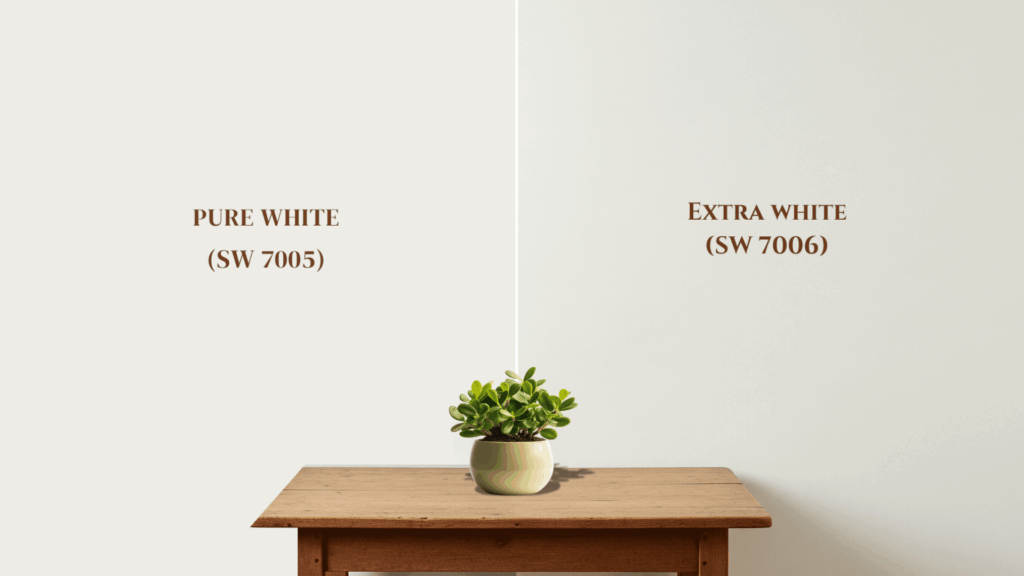
The LRV (Light Reflective Value) of both Pure White and Extra White plays a significant role in determining how bright or subdued the color will look in your space.
These technical specifications directly impact how the paint will perform in different lighting conditions.
The undertones also affect how the paint interacts with your existing decor and the overall mood of your room.
| Paint Color | LRV | Undertone | Best Use |
|---|---|---|---|
| Pure White | 84 | Warm yellow | Living rooms, bedrooms |
| Extra White | 86 | Cool blue | Trim, ceilings, modern spaces |
Pure White (LRV 84) has a more subtle light reflection, making it appear warmer and cozier in a room. Its undertone leans slightly toward yellow, providing a soft and welcoming vibe without being too creamy.
Extra White (LRV 86) is brighter due to its higher reflectance, which means it reflects more light and creates a cleaner, more stark white appearance. Its undertone is a subtle blue, giving it a cool and crisp feel.
Pro Tip: Test both colors in your space at different times of day to see how natural light affects their appearance.
Technical Differences Between Pure White and Extra White
When comparing the technical aspects of Pure White and Extra White, several factors influence their performance in different applications.
Both paints share similar quality standards but excel in different situations.
These technical differences help determine which paint works best for your specific project and desired outcome.
1. Durability: Both paints are highly durable, but Extra White tends to be more commonly used for trim and ceilings due to its cooler, cleaner look. Pure White is favored for walls and cabinetry in a more versatile way.
2. Finish Compatibility: Both paints work well with various finishes, though Pure White often pairs better with softer, more natural finishes, while Extra White complements high-gloss and contemporary finishes.
3. Temperature: Pure White leans warmer in tone, making it ideal for spaces where a cozy, welcoming atmosphere is desired. Extra White’s cooler tone is better suited for modern, minimalist spaces with sharp contrasts.
When to Use Pure White and Extra White
When choosing between Pure White and Extra White, it’s essential to consider their best and least ideal applications. The right choice depends on your room’s lighting, size, and intended mood.
Making the wrong choice can result in a room that feels too cold or too warm for its intended purpose.
Pure White is great for:
- Walls, trim, and cabinetry in rooms with warm-toned décor
- Spaces like living rooms, bedrooms, and kitchens
- Homes with traditional or transitional design styles
- Rooms that need a cozy, welcoming feel.
Avoid Pure White in spaces where you want a more sterile or stark look, or in high-contrast designs.
Extra White is excellent for:
- Trim, ceilings, and high-contrast spaces
- Modern designs or spaces that need a fresh, clean look
- Bathrooms and kitchens where cleanliness is emphasized
- Contemporary homes with minimalist design
Avoid Extra White in rooms that get a lot of natural sunlight or where you want a softer feel, as its cool undertone may appear too harsh.
How Pure White and Extra White Compare Inside Real Homes
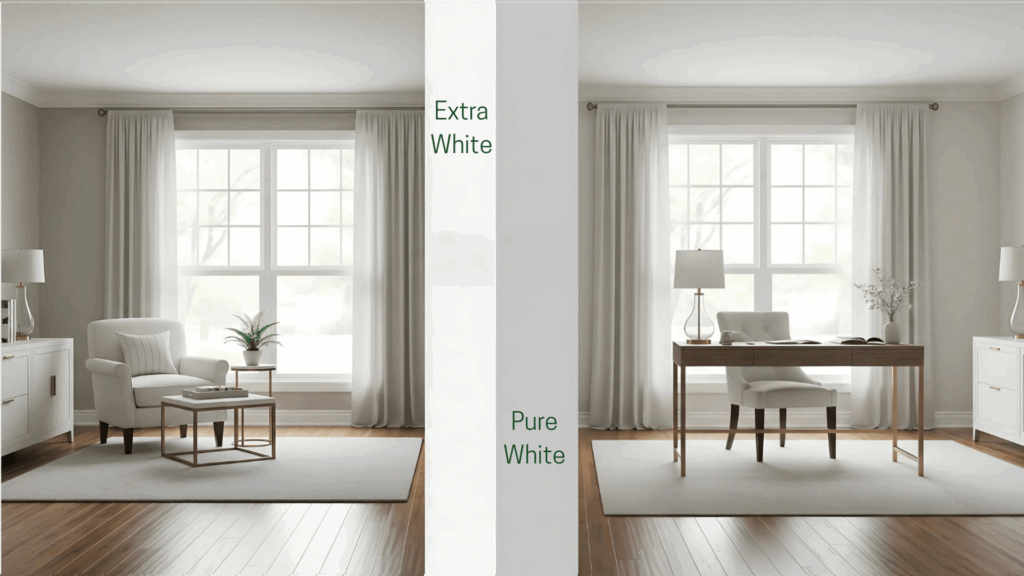
Both Pure White and Extra White perform beautifully in real homes, but they serve different design goals.
Understanding how they look in actual living spaces helps you make the best choice for your home.
Real-world performance often differs from paint chips, so considering how these colors work in various home settings is important.
Pure White can create a cozy, soft atmosphere in any room, complementing both warm and cool palettes. It pairs well with natural woods and tones, offering a balanced, inviting look.
Extra White shines in modern spaces, especially with a high-contrast design or cool color schemes like blues and grays. It is frequently used in trims and ceilings to achieve a crisp, fresh finish.
Fun Fact: Pure White is often chosen for entire homes because it flows well from room to room, while Extra White is typically used as an accent color for trim and architectural details.
Is Pure White or Extra White Better for Exteriors?
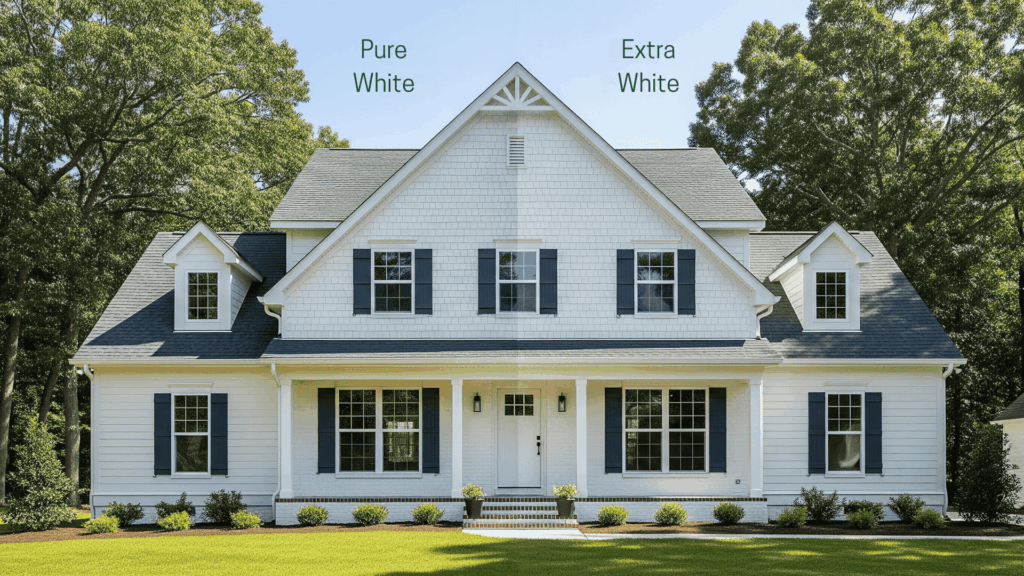
For exterior applications, Extra White is generally a better choice due to its high reflectance and clean, bright look, which withstands the outdoor environment’s lighting better.
Exterior conditions require paint that maintains its appearance under various weather conditions.
| Extra White for Exteriors | Benefits |
|---|---|
| Higher light reflectance | Helps maintain brightness |
| Cool undertones | Resist yellowing in sunlight |
| Sharp contrast | Works well with darker accent colors |
| Versatile style | Suits both modern and traditional architecture |
However, the choice also depends on your home’s architectural style and the overall look you want to achieve.
Pure White can work in exteriors if you’re looking for a softer and more natural feel, especially for homes with warm-toned elements like brick or wood siding.
Is Pure White or Extra White More Popular?
When it comes to popularity, Pure White tends to be the more versatile choice, commonly selected for entire homes due to its warm and inviting vibe.
Popularity often indicates adjustability and broad appeal across different design styles.
Pure White – Popular for whole homes, complements various styles, creates warmth, favored by families and traditional homes.
Extra White – Preferred for modern designs, trim work, contemporary spaces, and clean minimalist looks.
Extra White is often chosen by designers and homeowners seeking a crisp, modern look, especially in trims, ceilings, and spaces where high contrast is desired.
Conclusion
The choice between Pure White and Extra White ultimately depends on the style and atmosphere you want to create in your home.
Pure White is ideal for those seeking warmth and adjustability throughout their living spaces, while Extra White works best in modern, high-contrast environments where a crisp, clean look is desired.
Consider the lighting conditions, existing decor, and overall ambiance of your space when making your decision.
Both colors offer excellent quality and durability, so your choice comes down to personal preference and design goals.
The right white paint can change your home and create the perfect foundation for your design vision.
Sample both Pure White and Extra White in your space before making your final paint selection!

